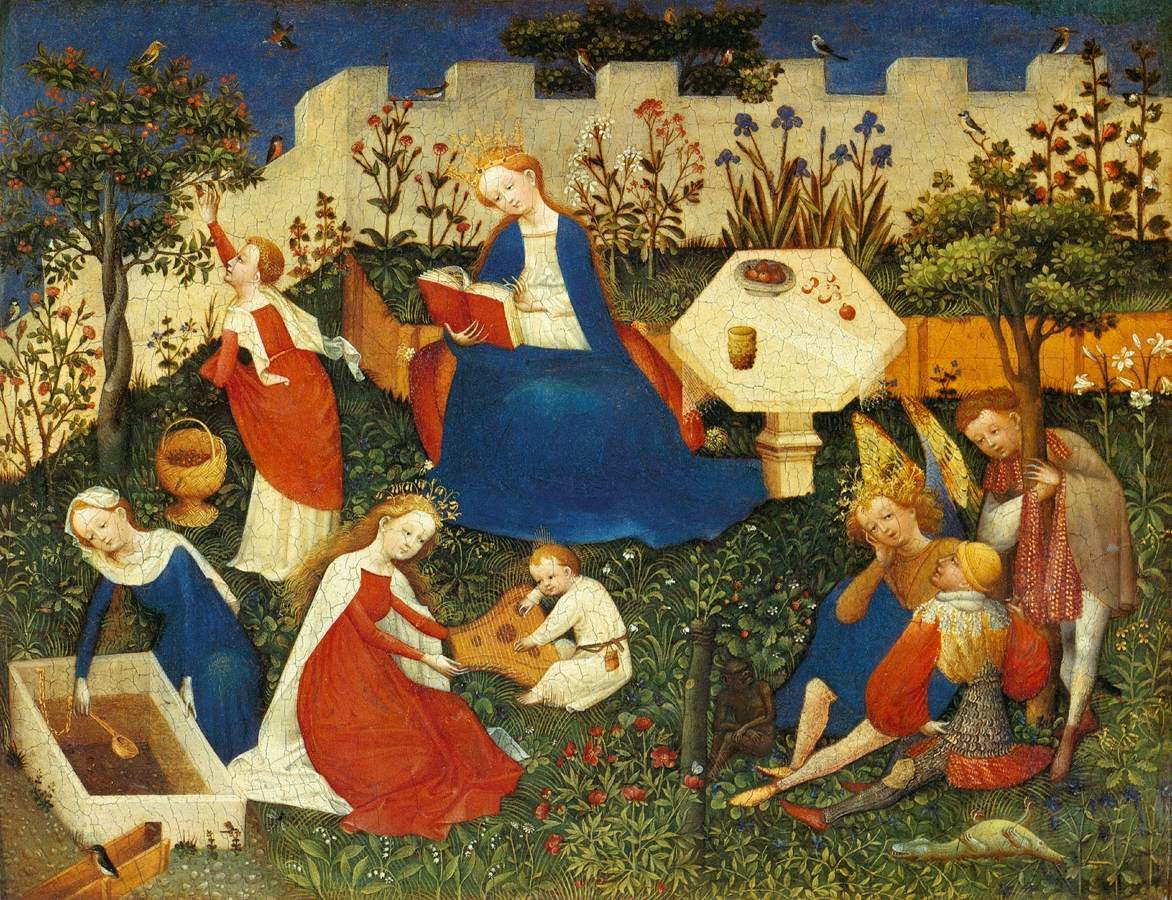


Turner moulded, refined, and ordered nature into stylised Arcadian scenes. Following the example of the classic landscape artists such as Claude Lorrain and Poussin, British painters such as Richard Wilson, Joshua Reynolds and J.M.W. This is best seen in the eighteenth century. The opposition between garden and wilderness reflected man’s complex relationship to nature, where an impulse to shape, tame and control the natural world lived alongside a desire to yield to its wildness and danger – a duality that has shaped and influenced the way gardens have been visualised, both in life and art. However, while the early garden emphasised small-scale, enclosed spaces, later ones took inspiration from the open expanse of the Biblical wilderness. The physical arrangement of the Renaissance garden bore a close resemblance to a stage set, a similarly enclosed and contained area for playing out fantasies and dramas, a source of transformation, dream and fantasy. The painting is not just a leisure scene, but also an image for religious meditation, dense with Christian symbolism such as the slayed dragon of evil and the fountain, source of spiritual life and salvation. In works such as The Garden of Paradise c.1415 by the Master of Oberrheinische Kunst, the Virgin Mary sits safely with her companions in a garden with castellated walls they read, pick fruit and play musical instruments, surrounded by blossoming flowers. As a metaphor for virginity, as well as a reference to the prelapsarian paradise, it appears in many early religious paintings and tapestries. Phone 06.The ‘close-locked’ garden, or hortus conclusus, as it became known in the Renaissance, was one of the most influential early garden images.

The project conceived by Electa editions with the “Soprintendenza speciale per i Beni Archeologici di Roma“, was curated by Annamaria Ciarallo, Giuseppe Morganti, and Maria Antonietta Tomei. The old rose garden in the Farnesian splendours.The petunias and plumbago in Nymphaea of the Domus Augustana.Plants and the glass to imitate the water in octagonal nymphaeum (the water effect was achieved using the scraps of blue glass with remarkable effect).Orchards and gardens in old prints on display at Casina Farnese.The exhibition grows in 8 stations, in addition to the educational section held the cryptoporticus.

Numerous literary and iconographic evidence some have made it possible to reproduce the gardens of the Imperial age, although it is not possible to know exactly what species were actually cultivated in large scenocraphic, including the inability to conduct scientific studies for the events that have characterized the places over the centuries. The story of green spaces of the Palatine, since it was formed today, represent the history of plant species, which have enriched our gardens in these centuries: set up in a sumptuous in the Imperial age, transformed into the Botanical Garden by Farnese, to accommodate the new plants imported from the Americas, restored in the 19th century by Giacomo Boni, which, next to the “classical” Roman flora there would also introduce new plants that starting from the end of ‘ 700 arrived from the East and South Africa due to the intensification of trade favored by English rule, they formed the “ Herbarium” ornamental flora italiana. Between rose, quinces, viburnum, periwinkles, petunias and verbenas a stroll to discover the glories of the past, by Augustus in the Farnese. In the heart of the eternal city have recently been recreated the gardens of the imperial palaces. Discovering the hortus conclusus and the gardensof ancient Rome.


 0 kommentar(er)
0 kommentar(er)
